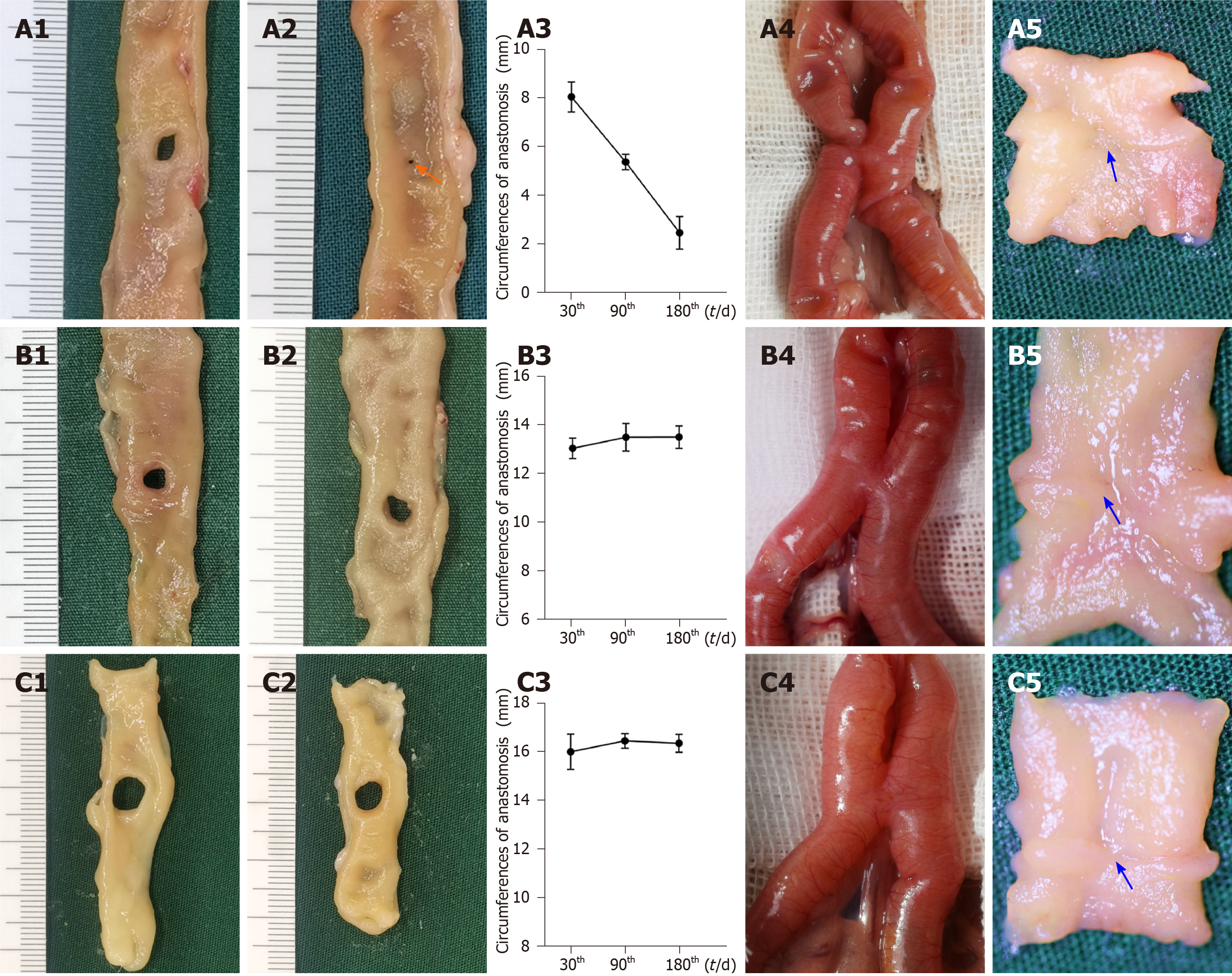Copyright
©The Author(s) 2020.
World J Gastroenterol. Nov 14, 2020; 26(42): 6614-6625
Published online Nov 14, 2020. doi: 10.3748/wjg.v26.i42.6614
Published online Nov 14, 2020. doi: 10.3748/wjg.v26.i42.6614
Figure 5 Gross appearance of anastomoses using the fedora-type magnetic compression anastomosis devices.
A: Group 2.1 (with a Φ4 mm sheet metal): The size of anastomosis 30 d after magnetic compression anastomosis (MCA) (A1), the size of anastomosis 180 d after MCA (A2), the change in anastomosis circumferences after MCA (A3), serosa side of anastomosis (A4), and mucosa side of anastomosis (A5); B: Group 2.2 (with a Φ5 mm sheet metal): The size of anastomosis 30 d after MCA (B1), the size of anastomosis 180 d after MCA (B2), the change in anastomosis circumferences after MCA (B3), serosa side of anastomosis (B4), and mucosa side of anastomosis (B5); C: Group 2.3 (with a Φ6 mm sheet metal): The size of anastomosis 30 d after MCA (C1), the size of anastomosis 180 d after MCA (C2), the change in anastomosis circumferences after MCA (C3), serosa side of anastomosis (C4), and mucosa side of anastomosis (C5). Orange arrows: Anastomosis; blue arrows: Anastomotic line.
- Citation: Chen H, Ma T, Wang Y, Zhu HY, Feng Z, Wu RQ, Lv Y, Dong DH. Fedora-type magnetic compression anastomosis device for intestinal anastomosis. World J Gastroenterol 2020; 26(42): 6614-6625
- URL: https://www.wjgnet.com/1007-9327/full/v26/i42/6614.htm
- DOI: https://dx.doi.org/10.3748/wjg.v26.i42.6614









